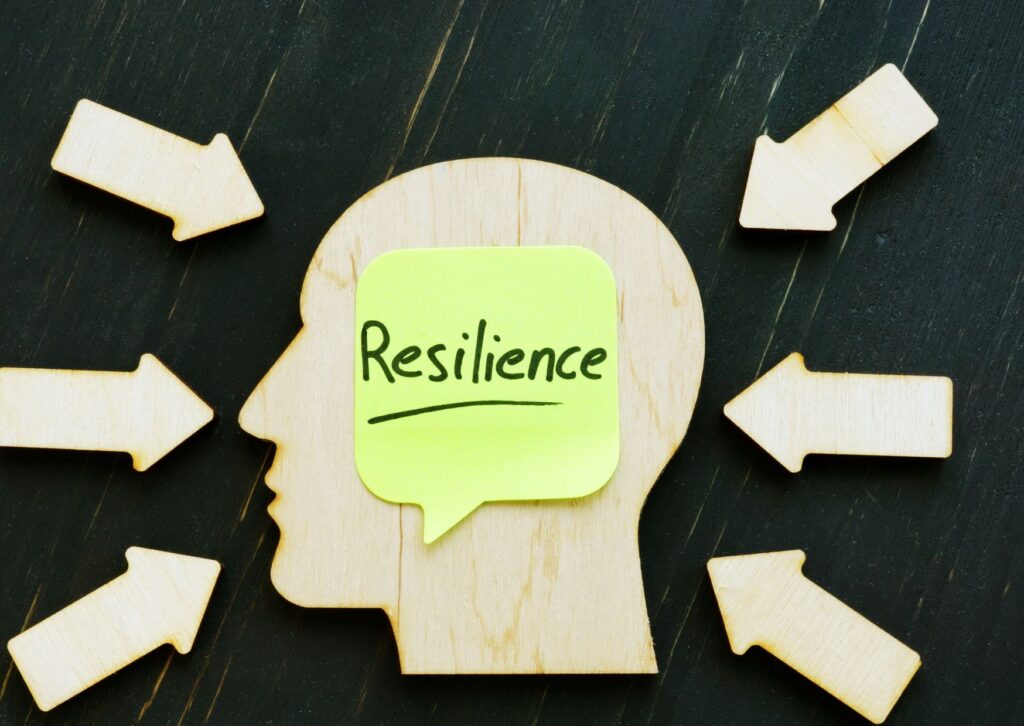10 Powerful Ways to Support Leadership Wellbeing
Leadership wellbeing is something that can be overlooked in the corporate world.
It’s a leaders job to inspire motivate and support the wellbeing of their workforce but who supports the leader?
As businesses evolve and challenges mount, the health and wellbeing of those at the helm become paramount.
As a wellbeing speaker, I’ve seen the vast benefits leaders can have on their organisation when their health and wellbeing is being supported.
This blog looks at the importance of supporting our leaders’ wellbeing, the unique challenges they face, and offers ten powerful strategies to ensure they thrive both personally and professionally.
Contents
Why it’s Important to Support the Wellbeing of Leaders
The Challenges Leaders Face That Impact Their Wellbeing
10 Ways to Support Leadership Wellbeing
Why it’s Important to Support the Wellbeing of Leaders
When leaders are at their best, both mentally and physically, they can guide their teams with clarity, vision, and empathy.
Here’s why supporting their wellbeing is crucial:
Driving Performance
A leader in good health, both mentally and physically, is more likely to make clear and strategic decisions.
Their energy and vitality can inspire the entire organisation, driving performance to new heights.
Inspiring Teams
Leaders set the tone for the workplace culture.
When they prioritise their wellbeing, it sends a powerful message to their teams about the importance of self-care, leading to a more engaged and motivated workforce.

Sustaining Longevity
The demands of leadership can be taxing.
By ensuring leaders have the tools and resources to maintain their wellbeing, organisations can ensure continuity and longevity in leadership roles.
Enhancing Creativity
Wellbeing is closely linked to creativity.
Leaders who are well-rested, stress-free, and in good health are more likely to think outside the box, bringing innovative solutions to the table.
Building Resilience
Challenges are a constant in business.
Leaders with a strong foundation of wellbeing can navigate these challenges with resilience, turning potential setbacks into opportunities for growth.
In essence, the wellbeing of leaders is not just about them.
It ripples out, influencing the entire organisation, its culture, and its future trajectory.
Investing in leadership wellbeing is, therefore, an investment in the organisation’s future success.

The Challenges Leaders Face That Impact Their Wellbeing
Leaders, while often seen as the pillars of strength in an organisation, are not immune to challenges.
Their roles come with a unique set of pressures that can significantly impact their wellbeing.
Here are some of the most pressing challenges they face:
Decision Fatigue
Leaders are constantly required to make decisions, big and small.
This continuous decision-making can lead to mental exhaustion, reducing their ability to make sound judgments over time.
High Expectations
Being at the helm means that leaders are under the microscope, with every action or inaction scrutinized.
The weight of these expectations can be a heavy burden, leading to immense pressure and stress.
Isolation
The saying “it’s lonely at the top” holds true for many leaders.
They often find themselves isolated, unable to share their concerns or vulnerabilities, which can lead to feelings of loneliness and detachment.

Balancing Multiple Roles
Leaders often wear many hats.
Juggling these roles can be overwhelming and can stretch them thin.
Rapid Organisational Changes
In today’s dynamic business environment, changes are constant.
Leaders must adapt quickly, which can be mentally taxing and can lead to burnout.
Public Scrutiny
Especially in prominent organisations, leaders face public and media scrutiny.
Managing public perception while staying true to one’s values can be a tightrope walk.
Fear of Failure
With responsibility comes the fear of letting down stakeholders.
This fear can be paralyzing, leading to anxiety and self-doubt.

Navigating Organisational Politics
Office politics can be a minefield.
Leaders must navigate these intricacies while maintaining their integrity, which can be mentally exhausting.
Continuous Growth Pressure
The need to continuously evolve, learn, and grow to stay relevant can be a source of stress, especially in industries that are rapidly evolving.

Personal Sacrifices
Leadership often comes with personal sacrifices, be it time with family or personal hobbies.
This can lead to feelings of guilt and resentment.
Understanding these challenges is the first step in addressing them.
By recognising the pressures leaders face, organisations can better support them, ensuring they remain at their best for themselves and their teams.

10 Ways to Support Leadership Wellbeing
It’s important that organisational structures support leaders as best as they can.
Here are 10 methods that can help:
1. Implement Decision-Making Frameworks
One of the most mentally taxing aspects of leadership is the constant need to make decisions.
By introducing structured decision-making frameworks, organisations can alleviate some of this strain.
These frameworks provide a clear roadmap for making choices, ensuring that decisions are consistent, informed, and aligned with the organisation’s values.
Additionally, training leaders in techniques such as the “Five Whys” or the “Decision Matrix” can help them approach problems methodically, reducing the mental fatigue associated with indecision.
Encouraging leaders to seek input and delegate when appropriate can also distribute the decision-making load, ensuring they don’t feel overwhelmed.

2. Promote Work-Life Integration
While the concept of work-life balance is often discussed, work-life integration is a more realistic and holistic approach, especially for leaders.
Recognising that work and personal life often intertwine, especially in leadership roles, it’s essential to create an environment where leaders can seamlessly integrate both.
This might mean allowing flexible work hours, providing facilities for physical wellbeing at the workplace, or even offering support for personal commitments.
For instance, if a leader has a passion for fitness, organisations could support them in carving out time during the day for a workout, understanding that this contributes to their overall wellbeing and effectiveness.
By promoting integration, leaders feel supported in all facets of their lives, leading to increased satisfaction and reduced burnout.

3. Foster a Culture of Open Communication
Open communication is the bedrock of trust and understanding.
Leaders should feel comfortable expressing their concerns, sharing their challenges, and seeking support when needed.
By fostering a culture where open dialogue is encouraged, leaders can address issues before they escalate.
Regular check-ins, feedback sessions, and town-hall meetings can provide platforms for such communication.
Additionally, creating mentorship programs or peer support groups can offer leaders a safe space to discuss their challenges with those who understand their unique position.

4. Invest in Professional Development
Continuous learning is vital for leaders to stay ahead of industry trends and develop new skills.
By investing in their professional development, organisations not only enhance their leaders’ capabilities but also contribute to their sense of purpose and achievement.
This could be in the form of workshops, courses, seminars, or even sabbaticals for higher studies.
Ensuring that leaders have access to resources and time for their growth can significantly boost their confidence and wellbeing.

5. Prioritise Mental Health Support
Mental health is as crucial as physical health, yet often overlooked.
Organisations should prioritise providing resources and support for leaders’ mental wellbeing.
This could include access to therapists, workshops on stress management, mindfulness training, and meditation sessions.
Recognising the signs of burnout and addressing them proactively can prevent long-term mental health challenges.

6. Encourage Physical Wellbeing
Physical health plays a significant role in overall wellbeing.
Encouraging leaders to prioritise their physical health can have ripple effects on their mental and emotional states.
This can be achieved by providing gym memberships, organising team physical activities, or even simple initiatives like standing desk setups.
Regular health check-ups and screenings can also ensure that any potential health issues are addressed promptly.

7. Establish Boundaries and Respect Personal Time
In the age of digital connectivity, it’s easy for work to spill over into personal time.
It’s essential for organisations to establish and respect boundaries.
Leaders should be encouraged to set specific ‘off’ hours where they are not expected to respond to emails or work calls.
This not only allows them to recharge but also sets a precedent for the rest of the team, emphasizing the importance of personal time and preventing burnout.
Why not check out our blog on “Strategies to Promote Rest and Recovery in the Workplace“

8. Provide Access to Coaching and Mentorship
Leadership can be a challenging journey, and having a mentor or coach can make a world of difference.
Coaches provide an external perspective, helping leaders navigate challenges, develop strategies, and grow in their roles.
Mentorship, on the other hand, offers guidance from someone who has been there, providing insights based on personal experiences.
Both can be invaluable resources for leaders, offering support, guidance, and a sounding board for ideas and concerns.

9. Celebrate Achievements and Recognise Efforts
Recognition goes a long way in boosting morale and wellbeing.
Celebrating successes, no matter how big or small, can provide leaders with a sense of accomplishment and validation.
Regular feedback, both positive and constructive, ensures that leaders know where they stand and what’s expected of them.
Organisational recognition, peer appreciation, or even a simple ‘thank you’ can uplift spirits and motivate leaders to continue their hard work.

10. Create Opportunities for Social Connection
While leadership can sometimes be isolating, human connections are vital for emotional wellbeing.
Organisations should create opportunities for leaders to connect with their peers, subordinates, and teams in informal settings.
Team outings, leadership retreats, or simple coffee breaks can provide leaders with a chance to bond, share experiences, and build stronger relationships, fostering a sense of belonging and community.

Overall, leadership wellbeing is an integral component of a successful organisation.
Leaders, with their pivotal roles, carry the weight of steering the ship, and ensuring their holistic wellbeing is paramount.
Recognising the unique challenges leaders face, and proactively addressing them, means organisations can cultivate an environment where leaders thrive.
This not only benefits the individual leader but also sets a positive tone for the entire organisation, driving growth, innovation, and a culture of care.
Author
Tyler Lowe – Health & Wellbeing Speaker
BSc Sport & Exercise Rehabilitation


